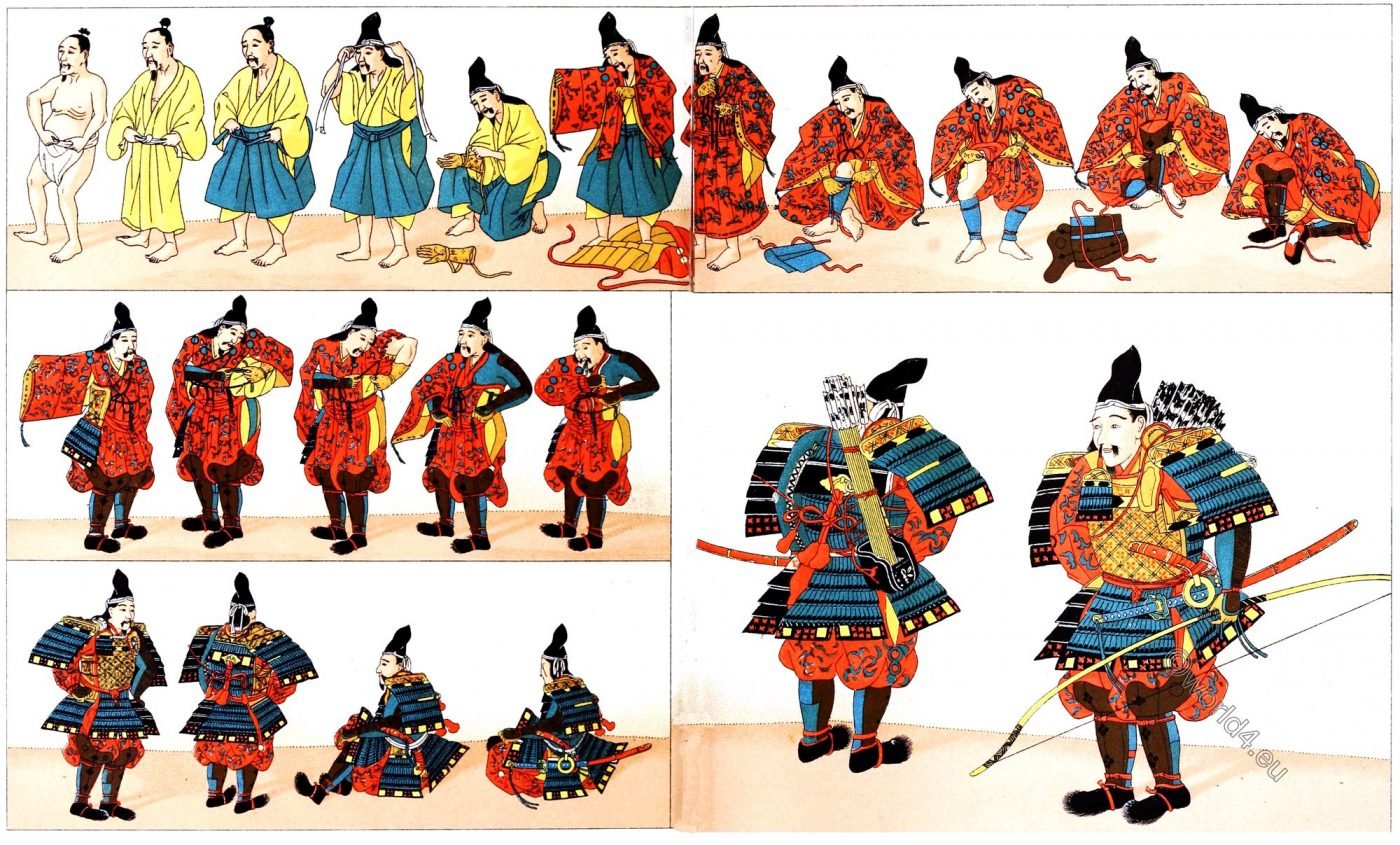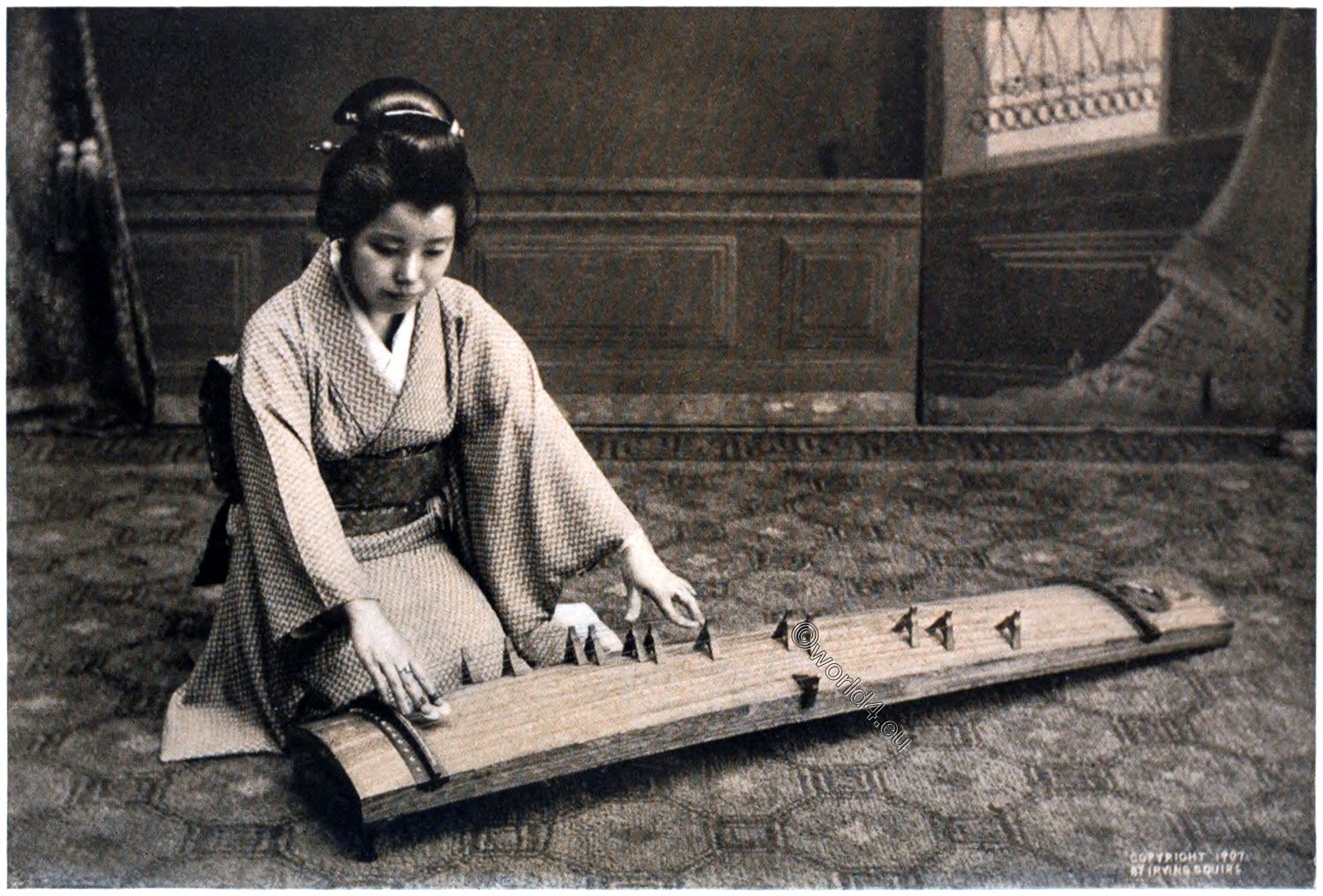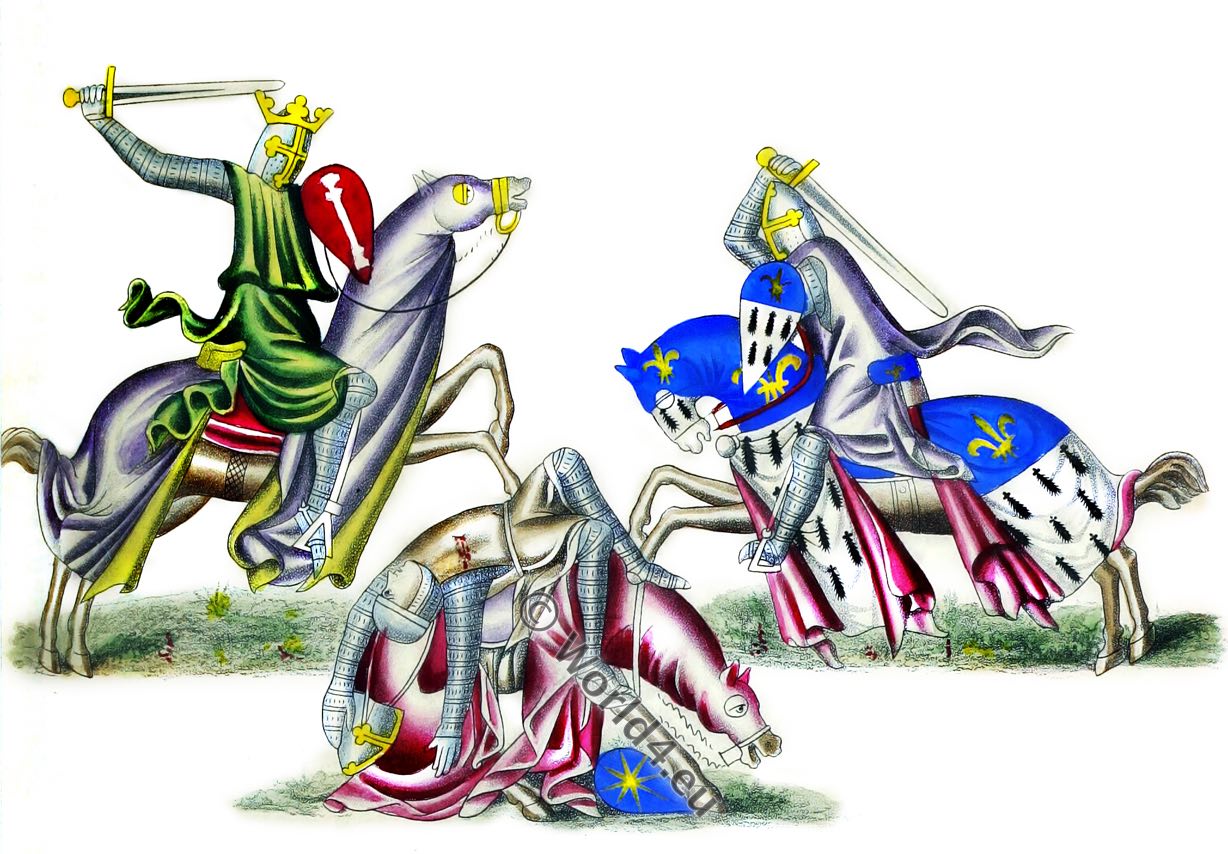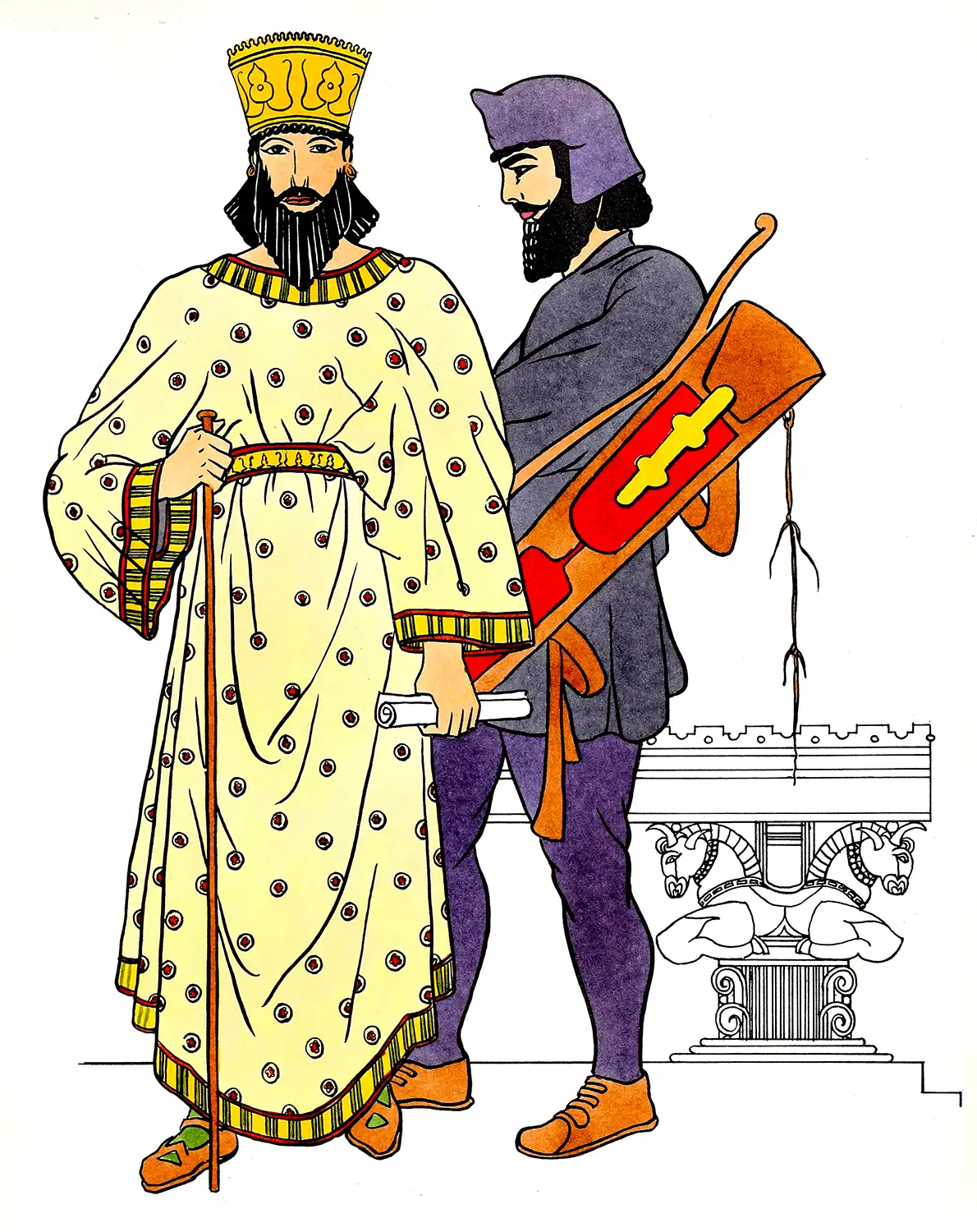
JAPAN. WARLIKE EQUIPMENT OF AN OLD JAPANESE ARCHER. (DOUBLE SHEET)
The old war armour of the Japanese, of which Europe now possesses a large number both in originals and in pictorial representations, the former in ethnological collections, the latter in museums, richest in the Berlin Kupferstichkabinet (Gierke’s collection), bears a striking resemblance in certain respects to the armour of the European Middle Ages.
Among the Japanese warriors one finds the armoured shirt, iron rings fixed on fabric, the breastplate, chest and back plate, splints for the front and back of the arm, leg splints with knee protection and iron gloves. Apart from the armoured shirt, however, the manufacture of these protective weapons was completely different from that of the Occident. The armour is by far not as heavy, but is mostly made of leather or of a milled paper mass, which is made even more dense by a coat of lacquer. There were still plates of light iron sheet connected to it. Copper was only used to decorate individual parts, and steel was only found on officers’ armour.
The protection of the shoulders, knees, elbows, etc. was made of dense silk braiding, which also ensured the mobility of the joints. On our board we reproduce in miniature an original Japanese picture showing the different phases of the clothing and equipment of an archer on foot. The picture seems to belong to the XVth century. In the 19th century the Japanese army was uniformed according to the European pattern.
No. 1. – The head is shaved smooth and only on the crown a tuft of hair is left standing, which is tied up with a paper strip. Only one point of the beard is left on the chin and one point on each corner of the mouth, the so-called fly. The warrior puts on his first piece of clothing, a belt.
No. 2. – A long skirt of light wool, which is also fastened with a knotted belt, represents the place of the shirt.
No. 3 – A third belt is used to fasten the wide, silk leg dress, which is open at the hips.
No. 4 – The black felt cap is held on the head with a silk bandage whose ends fall down on the back. The bandage also holds a kind of neck guard, which looks like a wig.
No. 5 – The warrior puts on his gloves, which, made of leather, are wrapped around the wrist with a strong band, but at the same time must be supple enough for the wearer to be able to make the numerous knots that are part of his complete outfit.
Nos. 6 and 7 – Put on an upper skirt with wide sleeves, open at the hips, and a leg gown of the same fabric and colour, which is fastened over the skirt.
No. 8 – In order to make the leg splints fit tightly, the archer puts a piece of silk on the calf, which is tied with straps under the knee and above the ankles.
No. 9 – Then the archer picks up his lower leg dress and ties it to the pale thigh, so that it forms a kind of puff pants.
No. 10 – The leg splints, which are made of varnished paper composition, leather or blackened iron sheet, are fixed with two straps. If they are made of the first two materials, plates of sheet iron are placed inside. To allow the leg full mobility, the individual parts of the splints are divided by inserted silk cloth, which is coloured blue on the splint lying on the ground.
No. 11 – The leather shoes, with the hair turned outwards, are fastened with silk bands so that they reach over the leg splints.
No. 12 – Here begins the application of the armour covering the abdomen, hips and thighs, which is made up of several parts. The warrior must follow an exact order and start at the right hip, otherwise he would not be able to put all parts in the right place with his complicated armour.
No. 13. – The shooter has his right arm splinted like his leg. In the right arm, which stretches the bow, i.e. is pulled back towards the shoulder, the splint reaches only up to the elbow, while the left arm, which holds the bow stretched out, is armoured up to the shoulder.
No. 14 – The left arm is gradually freed from the two sleeves of the outer garments, which have been incised below the shoulders for this purpose. The sleeves are attached to the body with ribbons or tied tightly around the arm.
No. 15 – The left arm and shoulder are then protected up to the sternum with a tight-fitting ring armour.
No. 16 – The soldier now pulls together the right upper sleeve at the wrist of the right hand by means of a string. The lacing is done with the left hand and with the help of the teeth. This is the last manipulation of his equipment, which he can do without outside help.
Nos. 17 and 18 – The two figures show us the archer from the front and from behind in a complete armour, consisting of loose plates, but firmly attached to the body, which protect the chest, the shoulders, the arms, the belly, the hips and the buttocks. Below the right shoulder, as in European armour, a metal plate is placed to protect the right side of the chest, which remained uncovered at the moment the bow was drawn.
The offensive weapons are: a sabre or a crooked dagger, which is stuck in the belt, and a long sabre with a slightly curved blade, the handle of which has a double band that is looped around the hand. The sabre is carried dauntlessly.
Nos. 19 and 20 – The two seated figures, on which both types of sabers are visible, prove that the settling of the warriors was possible, despite their apparently so cumbersome and awkward equipment.
No. 21 and 22. – At last the archer in full war gear stands before us. On his back he carries the quiver made of lacquered wood with the feathered arrows and in his left hand the wooden bow, which is usually six feet long. The significance of the large ring on the left side is uncertain. Perhaps it was used to hang the bow on the march.
Source: History of the costume in chronological development by Albert Charles Auguste Racinet. Edited by Adolf Rosenberg. Berlin 1888.
Related
Discover more from World4 Costume Culture History
Subscribe to get the latest posts sent to your email.







